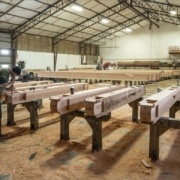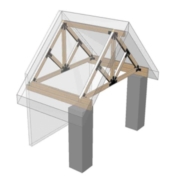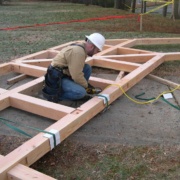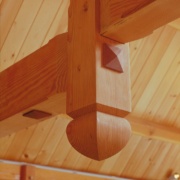Over the past forty years I’ve built on average one house per decade for myself. Actually, the fourth house was for a client whom I managed to persuade to marry me before I was finished with the design phase. I built each house fully believing that I would live in it forever — or at least the rest of my life. Then, as time passed, I would get hungry for the thrill of doing it again. Being engrossed in the process of building — finding a site, designing the house, jumping hurdles put in my path by zoning officials, scheduling deliveries and coordinating subs — makes me feel fully alive.
The first three homes I built before I “turned professional”, so early on I learned a few things, gained some insights, and had experiences which led me to question some of the commonly held rules bandied about in the world of building and real estate. One of these rules is that you should build with re-sale in mind. It’s a rule that gives you and your lender a sense of security. The downside is that your vision, your wants and desires, may be subordinated to the re-sale value rule.
I had trouble securing bank financing for my second house. First, while I taught architectural drawing back then and had already built one home for myself, I was not a professional builder. Banks tend to feel more comfortable with professionals. The bigger problem lie with the house design: the plans showed a rather long one story, south-facing structure (not real common in the late 70’s) with a three car garage (unusual then, but almost required now) and one, just one, bedroom (rare in any period). To complicate matters, the living room, kitchen, and dining areas were completely open to one another (the open plan was not really a concept in 1976). What the bank feared was that, should I default on my mortgage, unloading a three-car, one-bedroom house would be a bit tricky. With the profit from my first house, however, coupled with the fact that – at least back then – teachers were viewed as being fairly stable and reliable, the banker finally relented and approved the loan. That didn’t stop him from continuing to berate me for not designing with re-sale in mind in every conversation we ever had.
Almost a decade later I serendipitously encountered a recently listed wooded lot in a more remote setting that stole my heart. I made an offer, it was accepted, and so I had to sell my home. I hadn’t had to worry about this with my first house, as I’d never put it on the market. A couple had been hiking through the woods, saw the house and struck up a conversation with me. I invited them in for coffee; two days later they returned and asked if I would consider selling. After they ventured an amount, I couldn’t refuse.
So I contacted a realtor to put my second house on the market. After inspecting my three-car, one-bedroom albatross, the realtor’s summation was that there was no market for one-bedroom houses, and that I should be prepared for a real long wait. I signed with him and agreed to list my house for a price that I set, but which he felt was going to make my wait even longer. The house sold on the first day it was on the market – for the asking price and with no contingencies. The couple was retired, had raised a large rambunctious family, and wanted a place where their children could visit but not spend nights
So, my point is this: Some rules can be broken with impunity.
– TZ








